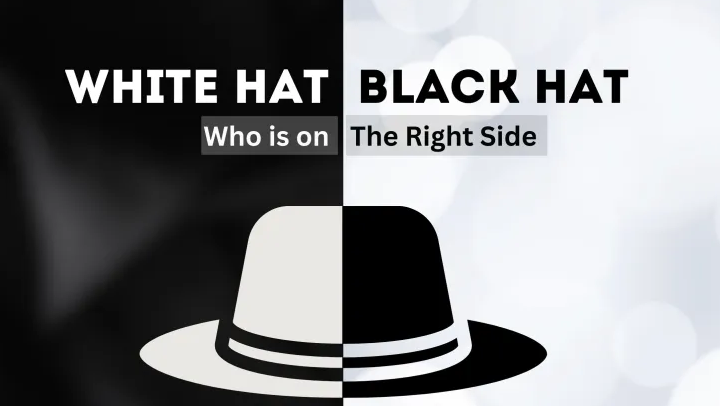Introduction
Search Engine Optimization (SEO) is crucial for improving website rankings and driving organic traffic. However, not all SEO techniques are ethical. SEO practices are typically categorized into White Hat SEO and Black Hat SEO. Understanding the differences between these methods can help you build a sustainable online presence while avoiding penalties from search engines like Google.
What is White Hat SEO?
White Hat SEO refers to ethical and legitimate techniques that comply with search engine guidelines. These practices focus on improving user experience and providing valuable content. Here are some essential White Hat SEO strategies:
1. High-Quality Content Creation
Creating valuable, informative, and engaging content is one of the most effective White Hat SEO techniques. Google rewards websites that offer original, well-researched, and relevant content to users.
2. Keyword Optimization
Proper keyword research and placement help in ranking higher in search results. Use long-tail keywords, LSI (Latent Semantic Indexing) keywords, and natural language to enhance visibility without keyword stuffing.
3. Mobile-Friendly and Fast-Loading Website
Google prioritizes mobile-first indexing and website speed. Ensuring your website is responsive, loads quickly, and offers a seamless user experience can significantly improve rankings.
4. Quality Backlinks
Earning high-authority backlinks from reputable websites improves your domain authority and credibility. Focus on guest posting, influencer collaborations, and organic link-building strategies to gain trust.
5. Proper On-Page SEO Optimization
- Optimize title tags, meta descriptions, and header tags
- Use alt text for images
- Improve internal linking to enhance navigation and crawlability
What is Black Hat SEO?
Black Hat SEO consists of unethical and manipulative techniques designed to trick search engines into ranking websites higher. These methods violate search engine guidelines and can result in penalties or de-indexing. Some common Black Hat SEO practices include:
1. Keyword Stuffing
Excessive use of keywords in content makes it unreadable and unnatural. Google penalizes websites that overload keywords just to manipulate rankings.
2. Cloaking and Doorway Pages
- Cloaking: Showing different content to search engines and users
- Doorway Pages: Creating pages with little to no value that redirect users to another site
3. Buying Backlinks
Acquiring paid or spammy backlinks from low-quality websites violates Google’s guidelines and can result in penalties.
4. Hidden Text and Links
Placing invisible text or links within content to trick search engines can lead to serious ranking penalties.
5. Duplicate Content
Copying or duplicating content from other websites lowers credibility and can result in a drop in search rankings.
Why White Hat SEO is the Best Approach
While Black Hat SEO may offer short-term gains, it comes with significant risks, including Google penalties, loss of rankings, and potential de-indexing from search results. On the other hand, White Hat SEO ensures long-term success, credibility, and sustainable growth.
Benefits of White Hat SEO:
- Improved search rankings and organic traffic
- Enhanced user experience and trust
- Protection from Google penalties and algorithm updates
Conclusion
Choosing White Hat SEO over Black Hat SEO is the key to achieving sustainable search engine rankings. Focus on quality content, proper keyword usage, ethical link building, and user-friendly website optimization to stay ahead in the competitive digital landscape.


